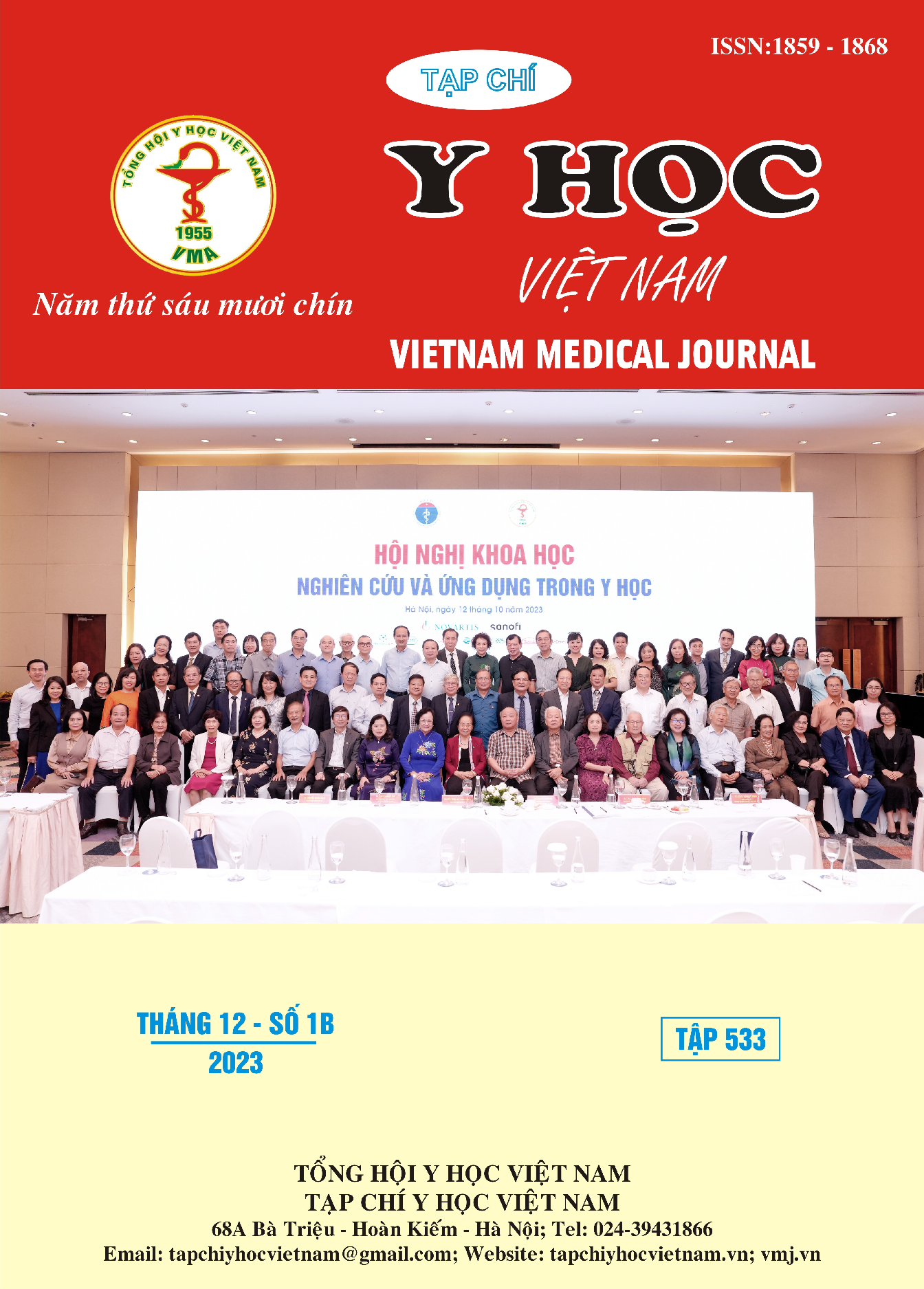ĐẶC ĐIỂM CÁC TRƯỜNG HỢP CÓ CHẨN ĐOÁN GIẢI PHẪU BỆNH RAU CÀI RĂNG LƯỢC TẠI BỆNH VIỆN PHỤ SẢN HÀ NỘI
Nội dung chính của bài viết
Tóm tắt
Mục tiêu: Mô tả đặc điểm lâm sàng, cận lâm sàng của các trường hợp có chẩn đoán Giải phẫu bệnh là rau cài răng lược tại Bệnh viện Phụ sản Hà Nội. Phương pháp nghiên cứu: Nghiên cứu mô tả hồi cứu trên 100 trường hợp có chẩn đoán rau cài răng lược và phẫu thuật lấy thai tại Bệnh viện Phụ sản Hà Nội từ tháng 01/2021 đến tháng 01/2022. Kết quả: Tuổi sản phụ trung bình trong nghiên cứu là 34,29 ± 4,56 tuổi; Lứa tuổi gặp nhiều nhất là dưới 29 tuổi, chiếm tỷ lệ 47,0%. Sản phụ có tiền sử mổ lấy thai chiếm 92% tổng số đối tượng nghiên cứu, trong đó đa số là mổ lấy thai cũ 1 và 2 lần chiếm 42%và 39%. Ra máu là dấu hiệu lâm sàng thường gặp nhất (chiếm 57,0%). Phần lớn các sản phụ bị rau tiền đạo trung tâm chiếm 77%. Tỷ lệ sản phụ chẩn đoán RCRL độ II chiếm tỷ lệ cao hơn 71,6%; tỷ lệ RCRL độ I chiếm 28,4%. Kết luận: Nghiên cứu của chúng tôi ghi nhận các kết quả về đặc điểm lâm sàng, cận lâm sàng của các thai phụ có giải phẫu bệnh cài răng lược đặc biệt là các dấu hiệu trên siêu âm Doppler đánh giá trước mổ sẽ góp phần cho các phẫu thuật viên tiên lượng mức độ khó, cũng như khả năng mất máu của các ca rau cài răng lược để có hướng xử trí thích hợp cho từng ca bệnh.
Chi tiết bài viết
Tài liệu tham khảo
2. Miller DA, Chollet JA, Goodwin TM (1997). "Clinnical risk factor of previa placenta accreta", Am.J. Obstet Gynecol, 177(1), 210-214.
3. Eller AG, Porter TF, Soisson P. (2009). "Optimal management strategies for placenta accrreta", BJOG, 116, 648.
4. Trần Khánh Hoa (2018), Nghiên cứu thái độ xử trí rau tiền đạo cài răng lược trên sẹo mổ lấy thai cũ tại Bệnh viện Phụ sản Hà Nội, Trường Đại học Y Hà Nội, Hà Nội.
5. C. Mitric, J. Desilets, J. Balayla, et al (2019). "Surgical Management of the Placenta Accreta Spectrum: An Institutional Experience", J Obstet Gynaecol Can, 41(11), 1551-1557.
6. Klar M, Michels KB (2014). "Cesarean section and placental disorders in subsequent pregnancies – A metaanalysis", J Perinat Med, 42, 571-83.
7. Silver RM (2015). "Abnormal placentation: Placenta previa, vasa previa and placenta accreta", Obstet Gynecol, 126(3), 654-68.
8. Lê Thị Năm (2021), Nghiên Cứu các trường hợp bảo tồn tử cung trong mổ lấy thai bệnh lý Rau cài rang lược tại Bệnh viện Phụ sản Hà Nội. Trường Đại học Y Hà Nội.
9. D. De Vita, G. Capobianco, G. Gerosolima, et al (2019). "Clinical and Ultrasound Predictors of Placenta Accreta in Pregnant Women with Antepartum Diagnosis of Placenta Previa: A Multicenter Study", Gynecol Obstet Invest, 84(3), 242-247.
10. Trần Danh Cường (2011). "Chẩn đoán rau cài răng lược bằng siêu âm Doppler màu", Hội nghị Sản Phụ khoa Việt - Pháp năm 2011 - Chuyên đề chẩn đoán trước sinh - sơ sinh, 119 - 124


